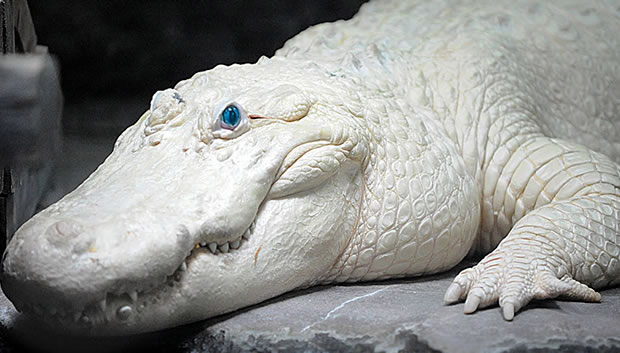
Northern Hairy-nosed Wombat
|
Creature Profile
The Northern Hairy-nosed wombat is also called the Queensland Hairy-nosed Wombat and only about 65 individuals exist in Australia. It is said to be Australia's most endangered marsupial and one of the world's most endangered mammals. Wombats have a thick, stocky body and are heavily built with powerful forearms. Adults grow up to three feet in length and weigh up to 88 lb making them the largest burrowing animals in the world. Their coats are soft, silky and brown in color. They have poor eyesight but have a very good sense of smell.
Hairy-nosed wombats are solitary, and seem to only come together for mating. Individuals dig large tunnel systems called "warrens" deep in the sand with the roots of trees as roofs. They prefer to feed at night and eat grasses and herbs. Little is known about their reproductive behavior. Mating seems to occur in the spring and summer only and females give birth to only one young. The young wombat stays in the mother's pouch for about six months.
Northern hairy-nosed wombats were once hunted for their fur until legally protected. The remaining 62 to 65 individuals were threatened by competition with introduced species such as sheep and rabbits for food, and most of the wombats are aging and their reproductive success is very low. The Epping Forest Nationaly Park was established in 1971 to protect the last population, and by 1982, cattle had been excluded from the area. Also, a recovery plan exists which includes the establishment of a captiving rearing facility, the creation of a second wild population, and a long-term plan to establish a network of populations throughout the historic range.
Wikipedia Article

|
Wikipedia Article Copyright Notice: This article is licensed under the GNU Free Documentation License. It uses material from the Wikipedia article "Northern hairy-nosed wombat". |
May 11, 2017
Glenn, C. R. 2006. "Earth's Endangered Creatures - Northern Hairy-nosed Wombat Facts" (Online). Accessed 11/10/2024 at http://earthsendangered.com/profile.asp?sp=511&ID=4.
Need more Northern Hairy-nosed Wombat facts?




